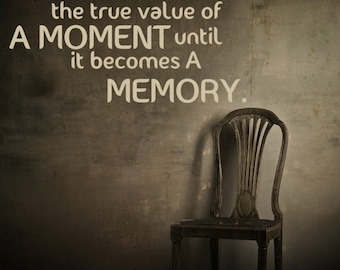Source Google.com.pk
In psychology, memory is the process in which information is encoded, stored, and retrieved. Encoding allows information that is from the outside world to reach our senses in the forms of chemical and physical stimuli. In this first stage we must change the information so that we may put the memory into the encoding process. Storage is the second memory stage or process. This entails that we maintain information over periods of time. Finally the third process is the retrieval of information that we have stored. We must locate it and return it to our consciousness. Some retrieval attempts may be effortless due to the type of information.
From an information processing perspective there are three main stages in the formation and retrieval of memory:
Encoding or registration: receiving, processing and combining of received information
Storage: creation of a permanent record of the encoded information
Retrieval, recall or recollection: calling back the stored information in response to some cue for use in a process or activity
The loss of memory is described as forgetfulness or, as a medical disorder, amnesia.
Sensory memory holds sensory information for less than one second, after an item is perceived. The ability to look at an item, and remember what it looked like with just a split second of observation, or memorization, is the example of sensory memory. It is out of cognitive control and is an automatic response. With very short presentations, participants often report that they seem to "see" more than they can actually report. The first experiments exploring this form of sensory memory were conducted by George Sperling (1963)[1] using the "partial report paradigm". Subjects were presented with a grid of 12 letters, arranged into three rows of four. After a brief presentation, subjects were then played either a high, medium or low tone, cuing them which of the rows to report. Based on these partial report experiments, Sperling was able to show that the capacity of sensory memory was approximately 12 items, but that it degraded very quickly (within a few hundred milliseconds). Because this form of memory degrades so quickly, participants would see the display, but be unable to report all of the items (12 in the "whole report" procedure) before they decayed. This type of memory cannot be prolonged via rehearsal.
There are three types of sensory memories. Iconic memory is a fast decaying store of visual information, a type of sensory memory that briefly stores an image which has been perceived for a small duration. Echoic memory is a fast decaying store of auditory information, another type of sensory memory that briefly stores sounds that have been perceived for short durations.[2] Haptic memory is a type of sensory memory that represents a database for touch stimuli.
Short-term memory
Main article: Short-term memory
Short-term memory allows recall for a period of several seconds to a minute without rehearsal. Its capacity is also very limited: George A. Miller (1956), when working at Bell Laboratories, conducted experiments showing that the store of short-term memory was 7±2 items (the title of his famous paper, "The magical number 7±2"). Modern estimates of the capacity of short-term memory are lower, typically of the order of 4–5 items;[3] however, memory capacity can be increased through a process called chunking.[4] For example, in recalling a ten-digit telephone number, a person could chunk the digits into three groups: first, the area code (such as 123), then a three-digit chunk (456) and lastly a four-digit chunk (7890). This method of remembering telephone numbers is far more effective than attempting to remember a string of 10 digits; this is because we are able to chunk the information into meaningful groups of numbers. This may be reflected in some countries in the tendency to display telephone numbers as several chunks of two to four numbers.
Short-term memory is believed to rely mostly on an acoustic code for storing information, and to a lesser extent a visual code. Conrad (1964)[5] found that test subjects had more difficulty recalling collections of letters that were acoustically similar (e.g. E, P, D). Confusion with recalling acoustically similar letters rather than visually similar letters implies that the letters were encoded acoustically. Conrad's (1964) study, however, deals with the encoding of written text; thus, while memory of written language may rely on acoustic components, generalisations to all forms of memory cannot be made.
The storage in sensory memory and short-term memory generally has a strictly limited capacity and duration, which means that information is not retained indefinitely. By contrast, long-term memory can store much larger quantities of information for potentially unlimited duration (sometimes a whole life span). Its capacity is immeasurably large. For example, given a random seven-digit number we may remember it for only a few seconds before forgetting, suggesting it was stored in our short-term memory. On the other hand, we can remember telephone numbers for many years through repetition; this information is said to be stored in long-term memory.
While short-term memory encodes information acoustically, long-term memory encodes it semantically: Baddeley (1966)[6] discovered that, after 20 minutes, test subjects had the most difficulty recalling a collection of words that had similar meanings (e.g. big, large, great, huge) long-term. Another part of long-term memory is episodic memory, "which attempts to capture information such as 'what', 'when' and 'where'".[7] With episodic memory, individuals are able to recall specific events such as birthday parties and weddings.
Short-term memory is supported by transient patterns of neuronal communication, dependent on regions of the frontal lobe (especially dorsolateral prefrontal cortex) and the parietal lobe. Long-term memory, on the other hand, is maintained by more stable and permanent changes in neural connections widely spread throughout the brain. The hippocampus is essential (for learning new information) to the consolidation of information from short-term to long-term memory, although it does not seem to store information itself. Without the hippocampus, new memories are unable to be stored into long-term memory, as learned from patient Henry Molaison after removal of both his hippocampi,[8] and there will be a very short attention span. Furthermore, it may be involved in changing neural connections for a period of three months or more after the initial learning. One of the primary functions of sleep is thought to be the improvement of the consolidation of information, as several studies have demonstrated that memory depends on getting sufficient sleep between training and test.[9] Additionally, data obtained from neuroimaging studies have shown activation patterns in the sleeping brain that mirror those recorded during the learning of tasks from the previous day,[9] suggesting that new memories may be solidified through such rehearsal.
Research has suggested that long-term memory storage in humans may be maintained by DNA methylation,[10] or prions.[11]
Models[edit]
Models of memory provide abstract representations of how memory is believed to work. Below are several models proposed over the years by various psychologists. There is some controversy as to whether there are several memory structures.
Quotes About Memories
Sad Quotes About Love That Make Your Cry and Pain Tumblr For Girls that make you cry for girls for Him for Boys That Hurts Tagalog and Pain Tumblr
Quotes About Memories
Sad Quotes About Love That Make Your Cry and Pain Tumblr For Girls that make you cry for girls for Him for Boys That Hurts Tagalog and Pain Tumblr
Quotes About Memories
Sad Quotes About Love That Make Your Cry and Pain Tumblr For Girls that make you cry for girls for Him for Boys That Hurts Tagalog and Pain Tumblr
Quotes About Memories
Sad Quotes About Love That Make Your Cry and Pain Tumblr For Girls that make you cry for girls for Him for Boys That Hurts Tagalog and Pain Tumblr
Quotes About Memories
Sad Quotes About Love That Make Your Cry and Pain Tumblr For Girls that make you cry for girls for Him for Boys That Hurts Tagalog and Pain Tumblr
Quotes About Memories
Sad Quotes About Love That Make Your Cry and Pain Tumblr For Girls that make you cry for girls for Him for Boys That Hurts Tagalog and Pain Tumblr
Quotes About Memories
Sad Quotes About Love That Make Your Cry and Pain Tumblr For Girls that make you cry for girls for Him for Boys That Hurts Tagalog and Pain Tumblr
Quotes About Memories
Sad Quotes About Love That Make Your Cry and Pain Tumblr For Girls that make you cry for girls for Him for Boys That Hurts Tagalog and Pain Tumblr
Quotes About Memories
Sad Quotes About Love That Make Your Cry and Pain Tumblr For Girls that make you cry for girls for Him for Boys That Hurts Tagalog and Pain Tumblr
Quotes About Memories
Sad Quotes About Love That Make Your Cry and Pain Tumblr For Girls that make you cry for girls for Him for Boys That Hurts Tagalog and Pain Tumblr
Quotes About Memories
Sad Quotes About Love That Make Your Cry and Pain Tumblr For Girls that make you cry for girls for Him for Boys That Hurts Tagalog and Pain Tumblr










No comments:
Post a Comment